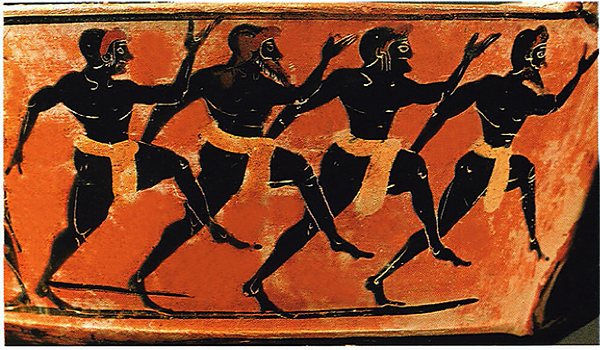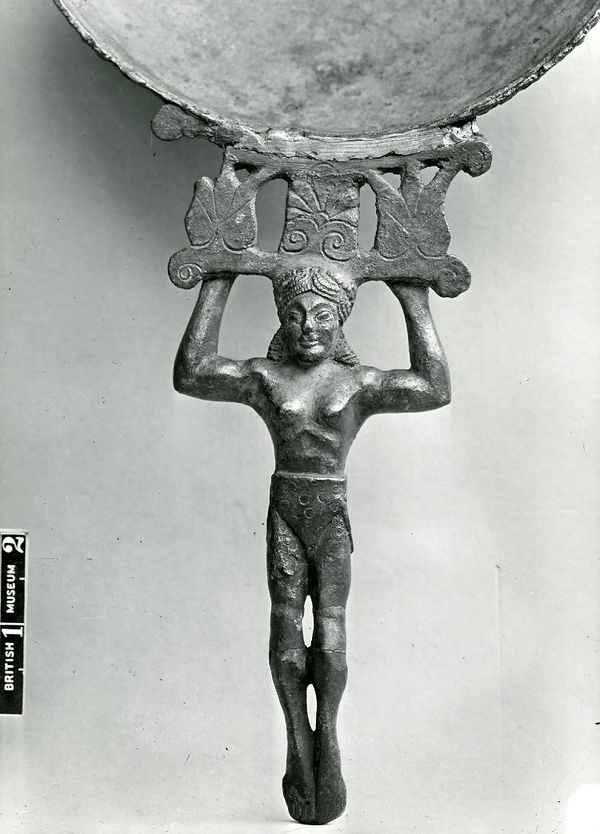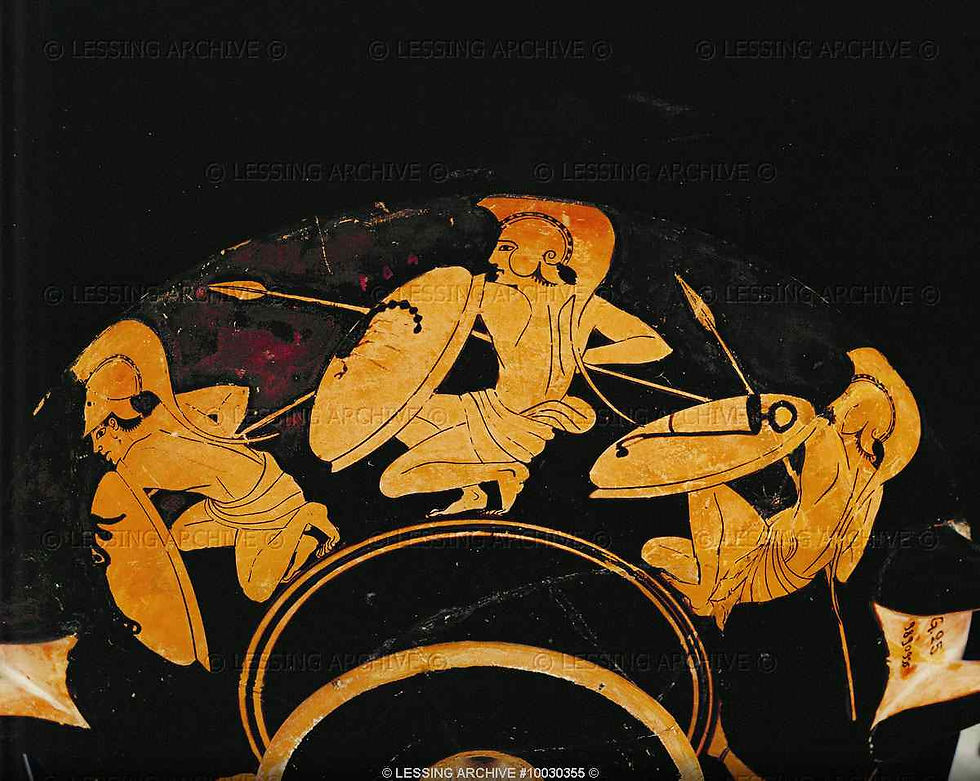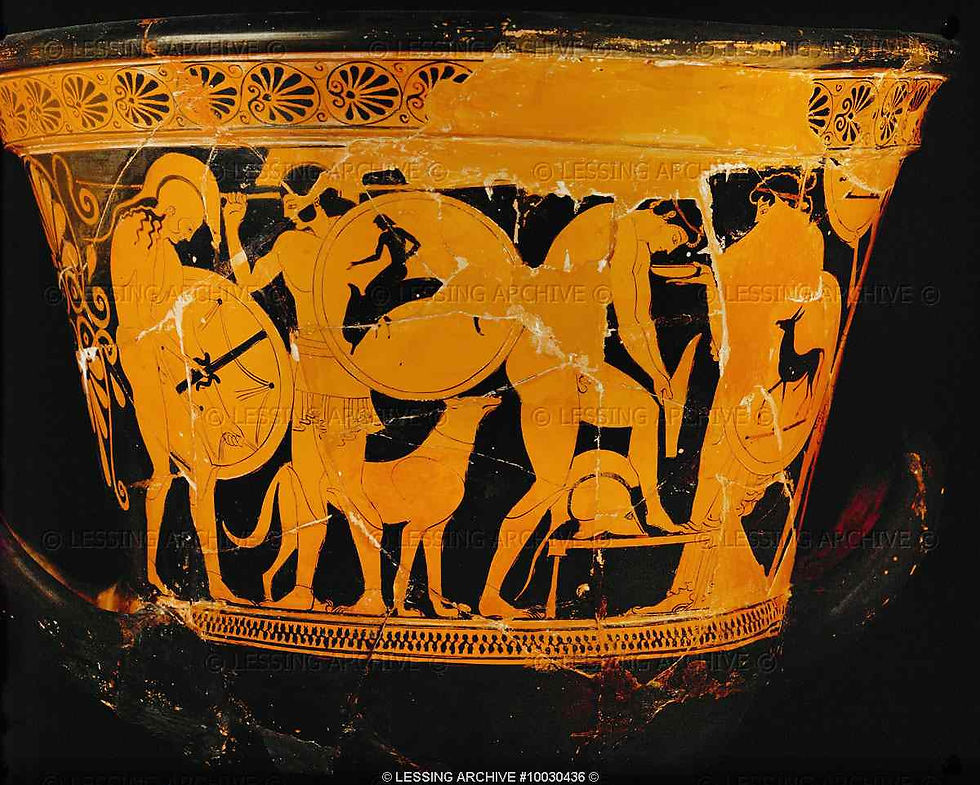
Underwear
It is justifiable that we have associated the Greeks with nudity, heroic or not, and despite the hesitance in portraying what is believed as "accurate", i.e. very short chitons and no underwear, the truth might have actually been different, or somewhere inbetween.
Men's underwear seem to be almost completely absent in ancient representations, including vases which tend to depict all aspects of life, even the most esoteric. In years of research we have found only a handful of depictions of what qualifies as underwear. This is very contradicting with literary sources which not only mention underwear, but they categorically stress that underwear was worn up to a time even in athletic games.
Thucydides in particular [1.6] says that it was the Spartans first who undressed completely in the Olympics, and up to that time the athletes used to wear loincloths. According to him this practice did not change a long time before his age. The Asiatic Barbarians of his time still used similar loincloths when boxing and wrestling.
The word that Thucydides uses is "diazoma" (διάζωμα), composed by the words δια=through and ζώμα=inner garment connected to the word ζώνη=belt. The most plausible way a belt-like garment can be linked with the word "through" is through the legs. The "diazoma" consequently was a type of loincloth similar to the roman subligaculum and below are the Greek representations that supports the theory.


Peleus and Atalante. Atalante seems to wear a typical subligaculum, only the artist seems to show the knot visible in the groin and not covered by the overfold. Alternatively it is the bottom of women's underwear as Atalante has been elsewhere depicted.

Handle of a bronze pan depicting a man with a diazoma. 5th c. BC
Another form of underwear was the "perizoma" (περίζωμα). This word is composed by the words περί=around and ζώμα=inner garment connected to the word ζώνη=belt. It is logical to derive that the difference between diazoma and perizoma is that the latter is not passed between the legs and it is just wrapped around the hips. Pausanias however [1.44.1] says that "the athletes wore perizoma". In particular he is talking about a foot race in the Olympic Games of 720 BC where Orsippus supposedly was the first to introduce nudity in the Olympics. Pausanias reports that he was said to be the first not to wear a perizoma as it was customary, but according to his opinion Orsippus untied his perizoma intentionally during the race (otherwise the judges would probably disqualify him before the race).
So according to our sources it was either Orsippus or the Spartans (Acanthus) who first introduced nudity in the Olymnpics of 720BC, but according to Thucydides the practice of wearing loincloths was abandoned "not long" before his time.
The perizoma however is not tied exclusively with the athletes. Other sources use the same word for the garment of sacrificing priests (Plutarch) and ironsmiths (Arrian). It is also linked perhaps with the way a cook wore his apron.
The perizoma was linked with craftsmen and there even were proverbs about it. "To work by the perizoma" meant to exercise only the surface part of the art/to do superficial art.
Interestingly, Polybius [6.25] uses the word to mean the garments worn under the panoply, or more precisely he contrasts the occasions "in perozomata" and "in thoraxes", but he is describing the old Roman cavalry before it adopted Greek fashion.
The perizoma is also associated with the cuirass in Photius's lexicon where he has the entry of "Ζώμα: the thorax and the perizoma"
Photius also mentions the "Lasion" (Λάσιον): a linen perizoma. Lasios meant shaggy, but lasion (λασίοις) apears also in Sappho [89] and according to Pollux it means finely woven linen garment.
Among reenactors the perizoma is usually associated with war. Indeed cloths that could be described as a perizoma are shown on hoplites, in two main forms. One is a soft sash wrapped around the waist or loins, and the other is a thicker material apron, some times worn alone or over the chiton. The latter is always decorate with geometrical patterns resembling Thracian designs.
Below we gathered all the depictions we could find, that might depict a perizoma. (Click on the images to enlarge)
The perizoma at work:


















The perizoma at war:


















The perizoma at the sacrifice:












The perizoma or an unpinned chiton?








Another form of managing one's "secret members"was the "kynodesme" (κυνοδέσμη). It literally meant "dog tie", since they called the genital "dog".
It was a leather thong that they tied the foreskin with when they got undressed. In the depictions it is usually associated with athletes but some times with symposiums too.
The pudency that we associate today with nudity the ancient Greeks associated with the sight of the glans, thus the purpose of the dog tie was to keep the glans hidden at all times when in public.
It seems that there were a number of different ways to wear it, by just tying the foreskin, or also curling up the penis and tying it to itself, or tying it from the foreskin around the waist.








A disheartening truth in our quest for the ancient Greek underwear is that none of the things above were worn under normal clothing, or at least there is not concrete evidence for it. Instead they seem to have been worn instead of normal clothing.
Although the diazoma could have been worn under clothes, we can find numerous depictions of occasions where the clothing reveals no underwear beneath, and the Greeks won't be the only culture that didn't usually wear underwear, nor the only ones with a looser sense of modesty than ours.